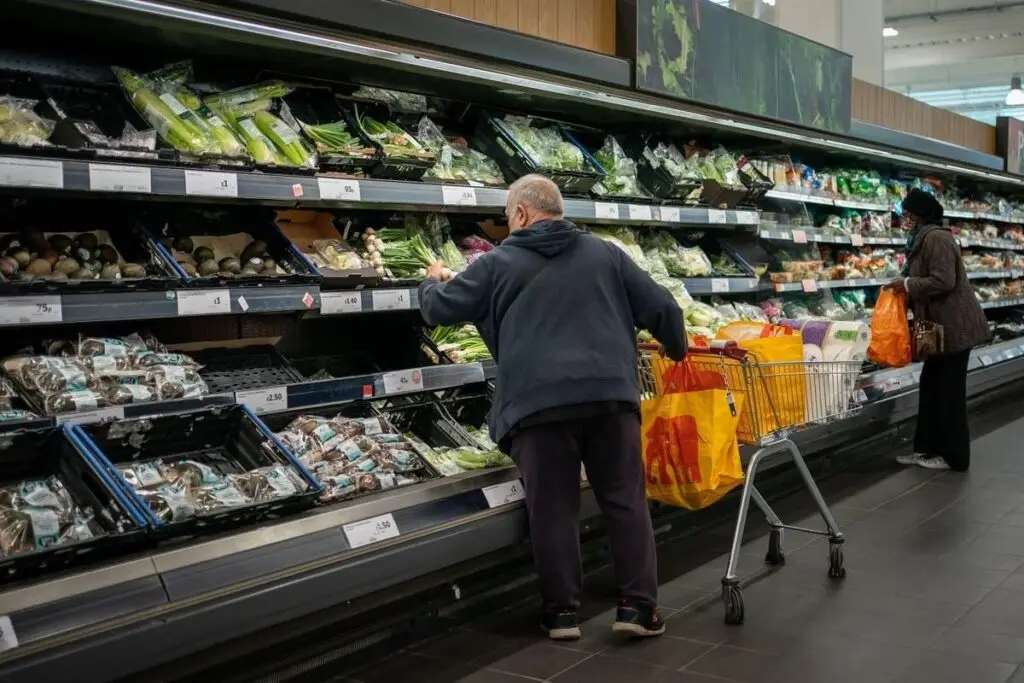The UK’s inflation rate has risen to 2.2% in July, marking the first increase this year.
This surge diminishes the likelihood of an interest rate cut by the Bank of England next month, raising concerns among economists and financial experts.
Inflation Rate Hits 2.2%
UK inflation has climbed to 2.2% in July, the first rise this year. This increase elevates the likelihood that the Bank of England will opt to maintain the current interest rates in their next meeting scheduled for September.
The Consumer Prices Index (CPI) recorded an increase from 2% in June to 2.2% in July. While this is lower than economists’ forecasts of 2.3%, it still surpasses the Bank’s target of 2%, causing concerns over consecutive interest rate cuts.
Impact on Domestic Energy and Services
Despite a drop in domestic energy costs, they fell by a smaller margin compared to the same period last year. This, coupled with a decline in hotel costs after June’s surge, contributed to July’s inflation figures, explained Grant Fitzner, ONS’s chief economist.
The CPI services price inflation, closely monitored by the Bank, decreased significantly from 5.7% in June to 5.2% in July. This decline could reassure policymakers about inflationary pressures.
However, prices are still rising faster than in previous months, albeit at a slower rate compared to the peak periods of 2022 and 2023.
Future Interest Rate Decisions
The recent inflation figures have cast doubt over further interest rate cuts by the Bank of England in their upcoming meeting. This sentiment is shared by economists and financial experts.
Earlier in August, the Bank’s monetary policy committee had already reduced interest rates to 5%, a quarter-point reduction. Economists suggest that the modest rise in inflation might lead policymakers to keep rates unchanged for now.
Expert Opinions
Ruth Gregory from Capital Economics mentions that the smaller-than-expected rise in CPI inflation, along with the significant fall in services inflation, suggests the disinflation process remains on track. This opens the door to more rate cuts later in the year.
Sarah Coles from Hargreaves Lansdown noted that while the inflation rise isn’t pleasant, it doesn’t cause a major upset. She predicts that September will likely see interest rates held steady, maintaining the status quo for savers and borrowers.
Luke Bartholomew at Abrdn believes that the fall in services inflation helps ease some policymakers’ fears about persistent inflation pressures. He anticipates at least one more rate cut this year despite the current figures.
Projections for Inflation and Economy
The Bank forecasts that inflation may reach approximately 2.75% in the year’s second half due to ongoing price increases in the service sector.
Looking ahead, the Bank expects inflation to decrease to 1.7% by 2026 and further down to 1.5% by 2027. This long-term outlook provides some relief for households and businesses struggling with current price hikes.
Darren Jones, the chief secretary to the Treasury, emphasised the government’s commitment to tackling the cost of living crisis, aiming to rebuild the economy while enhancing financial well-being across the country.
Inflation’s Broader Impact
While inflation’s slight rise may seem minor, its ripples are felt across various sectors. Businesses, in particular, feel the pressure as operational costs rise.
Households also face tighter budgets, especially after a period of relatively stable prices. The general hope for easing financial constraints faces setbacks with this inflation increase.
Moreover, the broader economic implications suggest a careful balancing act by the Bank of England in managing inflation and supporting growth.
The inflation increase to 2.2% in July suggests continued vigilance by the Bank of England in its monetary policy decisions.
While future rate cuts this year remain possible, the current figures indicate a careful approach is required to balance economic growth and inflation control.

